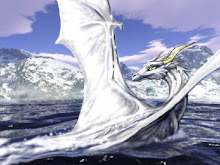Wednesday, February 25, 2009
La La sea dragons
ha ha in your face!!!!!!!!!!!!!!!!!!!!!
Thursday, December 4, 2008
paper dragons.....
http://www.papermodelz.info/wp-content/uploads/2008/06/cute_dragon.jpg
this is a pic of the one that I did. (no, this is not a pic that I took, its the same model I made, and mine looks exactly like it) I think its so cute!!!!!!!!!!!!!!!
Monday, November 10, 2008
Dragon Runes
Dragon Runes 
Dragon Runes are the creation of Lance Alan Dyas who also created a language known as Dragon Tongue. The Runes and the language are used in a roleplaying game.
Internal history
Dragon Tongue is rumored to be the oldest of all languages or the one true language from which all others descend, but this is in all likelihood merely poetic license. Dragons rarely speak but when they do they use this language. It is used by many mages who consider it a universal language of magic.
The language specifies the part of speech for a given root meaning, entirely by use of a suffix. The dragon language often combines multiple basic word meanings to form new words. Hence the word for spider might literally translate as many legged weaver. Dragons can take a long time to say things but when one is virtually immortal it is more important to be perfectly understood than concise.
Dragon Runes
Links
Lance Alan Dyas' website
http://www.dyasdesigns.com
More information about Dragon Runes
http://www.dyasdesigns.com/roleplay/DragonMagic.html
Monday, November 3, 2008
Last two posts put together.....
Today, the popularity of science fiction, and such role-playing games as Dungeons and Dragons, means that dragon figurines are a hot commodity. From pewter or other metal game pieces, to wood carvings, Chinese jade and crystal, the dragon has become a symbol of magic and mystery, a tangible piece of other worlds, that can be held in our hand, and admired for the exquisite craftsmanship put into every piece. Whether they are hand cast pottery, or hand-blown glass, dragon figurines add a splash of brilliance to a desktop, bookcase, or display pedestal, where they can rule over their kingdom.
Notable Dragons
- The Tarasque dragon-like monster of Tarascon, France, was charmed and led back into the city by St. Martha, where he was stoned to death by the people.
- Dragonroot, also known as Jack-in-the-pulpit. Used for medicinal purposes, but only after the root is dried. Taken internally while fresh it causes death by gastroenteritis.
- Leviathan, a biblical creature who has wrapped his body around the Earth, and holds its tail in its mouth, lest the Earth fall apart.
Western
Part of the reason it is so hard to define what constitutes a dragon, is the wide variance in their physical images. In Eastern culture the dragon started out as an elongated, almost serpentine creature, usually, but not always showing four shortened legs, and a spaded tail. They were covered in scales, had a crest on the head, and were brightly colored in many hues. In Western culture, the traditional image of the dragon is of an almost reptilian animal, usually green, with wings like a bat, and breathing fire. Some also have feathers. Which is likely what leads to confusing dragons with gryphons (leonine in the hind quarters and raptor-like in the front quarters) and the phoenix (a mythical bird).
Eastern.....
The number nine figures in many aspects of dragon worship in Chinese culture, for example, the nine ways in which they are shown:
- On the screws of fiddles because they are said to like music
- On top of bells and gongs, because they call out loudly
- On the bottom of stone statues, since dragons can support heavy weights
- On the top of writing tablets, because dragons are fond of literature
- On bridges, because dragons are associated with water
- On the eaves of temples, because dragons guard against danger
- On Buddha’s throne, where dragons rest
- On prison gates, which represent trouble-making dragons
- On the hilt of swords, because dragons can slaughter their enemies
Back to Dragons...
The dragon is a positive force, and represents power, excellence, and striving for goals, as well as being a benevolent force, which radiates goodwill, good luck, and blessings. Shrines to them can be found in many places in China, usually near the sea, since Eastern dragons tended to be water creatures.
